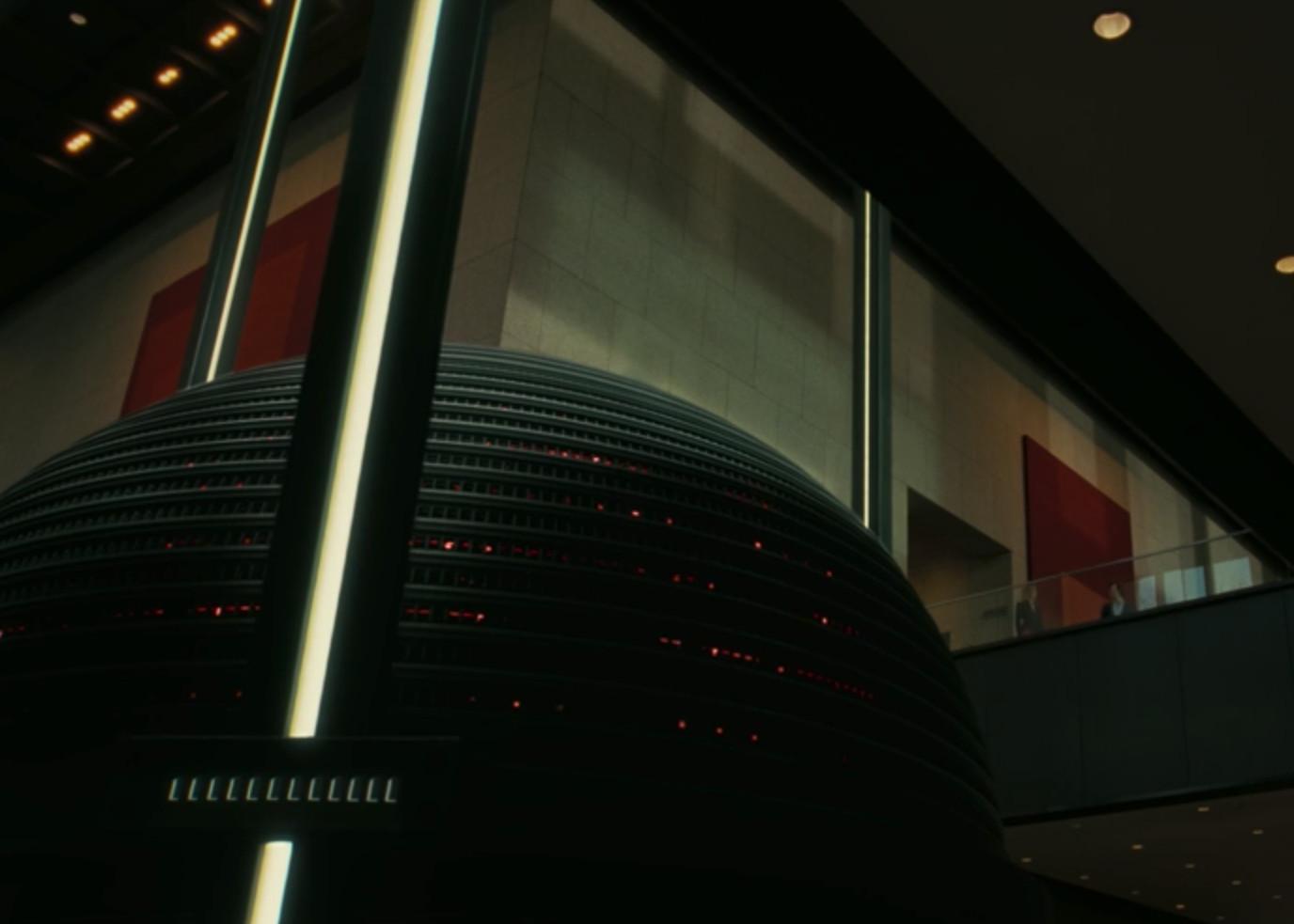
You know it’s a good episode of Westworld when neither Paris getting nuked nor a dude getting his dick shot off is the main takeaway. The indelible part of “The Mother of Exiles” was not the Westworld-Chernobyl crossover, but rather a twist worthy of a season finale: DoFoures. After spending the beginning of the season wondering which hosts Dolores had smuggled out of the park, it was revealed that Dolores has been making copies of herself—Dolores is Dolores, Charlotte is Dolores, Martin the Scottish Goatee Guy is Dolores, and Musashi is Dolores. The four Doloresmen of the Apocalypse were in full force on Sunday, and, for once, a Westworld episode gave us a lot of questions and a lot of answers. Let’s dive into what exactly happened, and where the show goes from here.
DoFoures
Last week, we went over all of the reasons that Dolores was the only likely candidate to be in Charlotte Hale’s head. Those reasons boiled down to:
- Dolores saying she trusted Charlotte, but there being no evidence that Dolores trusted any other character except herself
- Dolores telling Charlotte that “No one knows you like I do. No one knows me like you”
- This season’s endless array of reflections, mirror shots, and symmetry
- The parallels to other scenes we’ve seen with Dolores debriefing herself
We got more throwbacks in this episode when Charlotte shaved William, which was a direct callback to Dolores shaving William in the finale of Season 1.


And even before this episode, there were clues that Dolores was going to replicate herself. Dolores’s theme music had also been used for Hale and Connells. And when Tessa Thompson’s name appears in the Season 3 title sequence, cells are replicating:
So with Dolores’s plan revealed—and with us half patting ourselves on the pack, half slapping ourselves for not catching some of the more obvious signs—the question now becomes what she and her clones do next. The first key is that there might be one more clone on the way. Dolores left Westworld with five brain balls.

Counting the one in her own head, that’s six total. Dolores, Charlotte, Connells, and Musashi make four; Bernard and his red-speckled control unit makes five. That means a sixth is still unaccounted for. Could there be another Dolores clone waiting somewhere? Or could she have brought a different host back? Or does she still have the last one—whether it’s her or someone else—and is waiting for the right person to implant it in?
Whatever Dolores does with the last brain ball, multiple versions of Dolores creates a thorny problem. Throughout Season 2, we saw Dolores re-enacting an exchange she had with Arnold while training Bernard. The conversation (and the second season) hinged on one crucial idea: What is real.
“That which is irreplaceable,” Bernarnold tells her.
Well, uh, Dolores seems pretty replaceable now. Perhaps all of these clones suggest she is beyond a single entity, and that all of the Dolores copies would have to die for Dolores to be dead. (Shout-out horcruxes.) But that also raises the question that if all of these copies of her are replaceable, are any of them individually real? And if they are real, does that mean Dolores’s working definition of reality is wrong?
What is going on with William?
William is all of us when social distancing stretches into May. He’s shooting at his own reflection, hallucinating his dead daughter (whom he killed), and by the end of the episode, is being committed to a private mental hospital by Charlores.
Is this guy a host or a human or what? By the end of Season 2, William was digging into his arm to figure that out—to echo what Angela told him when he first got to Westworld, “If you can’t tell, does it matter?” Once you have to stick a knife in your arm to figure out your life, things have gotten out of hand (or, uh, arm). We already know that William’s father-in-law, James Delos, attempted to have his mind put in a host body 149 times. Wouldn’t the next logical candidate be William? And wouldn’t Host William be struggling with the process about as much as Host Delos did?
There’s a lot of evidence that William is dead and in a host body. Some of that evidence is not subtle. William literally referred to himself as “death” in Season 2. In the most recent episode, Charlores sees him and says, “It’s like seeing a ghost.”
We might have a clearer idea of what is happening with William than William does. We learned in Season 1 that William’s wife died by suicide by taking pills in their bathtub. William often flashes back to this moment, but his memories of her death are inconsistent: sometimes the water overflowing from the tub is crystal clear, but sometimes it is so bloody that the water runs dark red. The color differences are stark enough that it would be difficult for them to be coming from the same moment, which opens up the possibility that there were two suicides in that bathtub: that of William’s wife, Juliet, who used pills, and later on, that of William, who slit his wrists in the tub. It’s hardly a stretch considering that we’ve seen William debate killing himself twice now (he put a gun to his head before deciding to cut into his wrists in Season 2, and again this week). He has also been personally overseeing a project to put the consciousnesses of dead people into host bodies. The guy was in the on-deck circle.
William’s memory of this incident might be repressed in his mind. In the opening scene this week, William is trying to shoot reflections of himself when he looks up, and sees blood dripping on him. There is a burst of water through the ceiling, and then he rises and wakes up in a tub of clear water. Later, when Charlores sees William shaving in his living room, she says “Something wrong with your bathroom?” William responds, “I don’t use that room.”
Why would William’s mind succeed in a host body if James Delos’s did not? One answer might be the mere fact that they kept telling James Delos he was a host, when the only real way the mind will accept its host is if the person figures that out for themselves; if they complete the maze.
At the end of the episode, after William is committed to a private mental hospital (the Inner Journey Recovery Center), he hallucinates Dolores. In her original Westworld garb, she compels him to ask the question: “Am I me?” This might go back all the way to the pilot, when Dolores’s dad went on the fritz.
“A question you’re not supposed to ask,” Peter Abernathy said then. “And an answer you’re not supposed to know. Would you like to know the question?”
We didn’t hear that question until this week. Once William asks that question—“Am I me?”—Dolores tells him, “Welcome to the end of the game.” But just as Dolores reaching the end of the game was a new beginning for her conscious life, William may also be starting a new inner journey. He began the episode physically free but mentally imprisoned. He ends the episode physically imprisoned but mentally free. After two seasons of William being the Man in Black, his first appearance in Season 3 ends with him decked out in white. Perhaps William will be quite different from the person we’ve gotten to know the past two seasons.
Mirror world
Westworld was created by the married couple Lisa Joy and Jonathan Nolan. Nolan is the brother of Christopher Nolan, and the Nolans love unreliable narrators. But this season of Westworld is taking that concept to the next level: an unreliable timeline.
Some of the events we’ve been watching may actually be happening in a simulation. In the first episode, Liam Dempsey’s friend wondered aloud whether the entire world he was in (and the show we are watching) was a simulation. In the second episode with Maeve, we saw that simulations are a serious possibility in the show. In the third episode, Dolores explained to Caleb that Rehoboam, the all-seeing artificial intelligence, has created a “mirror world” to simulate reality and predict the future. In this episode, Serac, the trillionaire who helped create Rehoboam, explains that mirror world further when he takes Maeve out to dinner. Serac, so distraught by the nuclear destruction of Paris, created “the most comprehensive picture of human behavior ever seen.” That picture is Rehoboam’s mirror world, but the mirror world is not a perfect replica. It still has gaps in human emotions and behavior, and some of those gaps may be noticeable. We may be seeing these as they happen when we see the “divergence” cutscenes.

In Episode 3, Charlores watches the video of herself singing to her son twice. As noted by the Reddit user LeeRobbie, one version of the video is much longer and more emotional than the other. Here is the entire text of what Charlotte says the second time we hear the video, with the parts that were not in the first version in bold.
“This is Charlotte Elizabeth Hale. This is a message for Nathan. Nathan Hale, my son, I haven’t always been there for you. There’s so many things I need to say. This might be the last time that mommy gets to talk to you. I love you so much, buddy. I am so proud of you, and I’m sorry. I am so sorry if I ever made you feel like you weren’t the most important thing. I was trying to build a life for us. I, uh. And now I realize none of it even matters. The night that I left, you wanted me to tuck you in, to sing you a song, our song, but I didn’t have time. So I am going to sing it to you now.”
While this may have just been an editing choice for dramatic effect, we’ve watched enough of this show to know that its choices are deliberate. Therefore, this discrepancy likely suggests that there are two different versions of the same thing: one in the real world, in all its complexity, and one in the mirror world, which has an incomplete view of people’s emotions. When scenes this season have begun with Rehoboam announcing a divergence, it’s likely been an indication that what’s come next is occurring in a simulation.
We may also be seeing Bernard in the mirror world. Another Reddit user pointed out that in Bernard’s his first scene this season, we saw him find a wounded calf with barbed wire around a broken leg.

But when we see the calf again seconds later, the barbed wire is gone.

It’s tempting to wave this off as a production error, but again, we’ve watched enough of this show. The continuity error in the next scene is even stranger: As Bernard is walking back to his home, he walks by some workers arguing over a board game and shoving each other. By the time he makes it to his house, he turns around—seemingly confused—and the workers are singing together. In a scene from Sunday’s episode, Bernard is walking to his motel. One shot shows a hazy sky.

Another shot shows a blue sky.

Serac’s goal with Rehoboam is to play out the future in a mirror world and then imprint that future onto the real world, therefore knowing what to expect. As he told Maeve in this episode, “I deal in futures.” The main issue for Serac is that Rehoboam cannot predict what Dolores does—it only has data on human behavior—which makes the simulation less accurate and leads to continuity errors. The breaking point that this season may be hurtling toward is the existence of so many Doloreses rendering Rehoboam completely unable to predict what is happening, causing the simulation to break the same way that Maeve crashed one in this season’s second episode. When that happens, we may look back and realize that half of the season we were watching was a lie.
But even if Rehoboam does get to the point where it can create an accurate mirror world, that would create a larger-scale version of the issue Dolores is facing. (Uncoincidentally, Rehoboam looks like a larger-scale version of a host’s control unit.)

If what is real is that which is irreplaceable, does that mean that anything that can be copied—including an entire world—is fake? Like Dolores, humanity may have to come up with a new definition for reality.
Disclosure: HBO is an initial investor in The Ringer.

